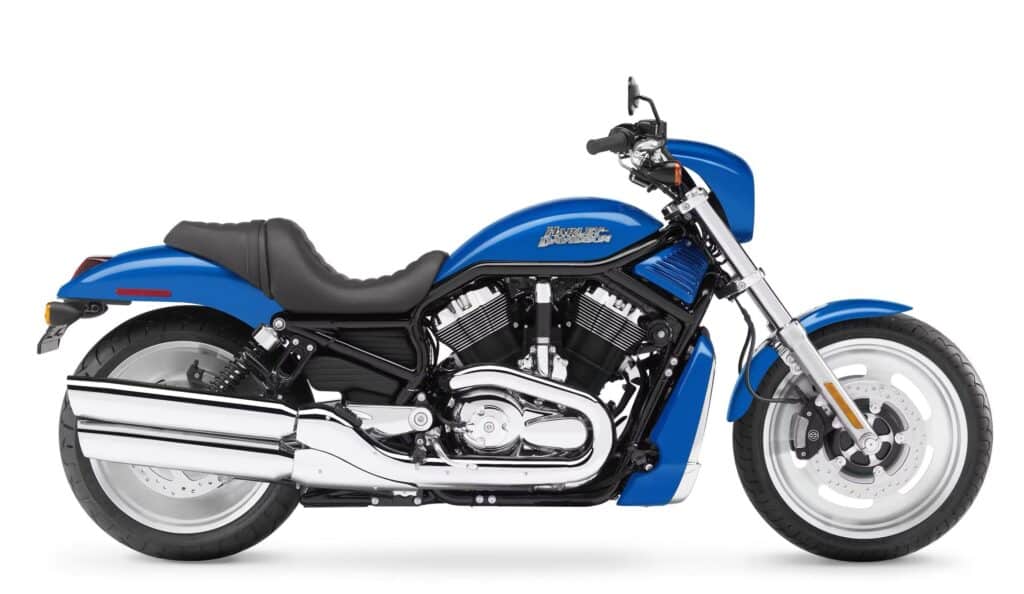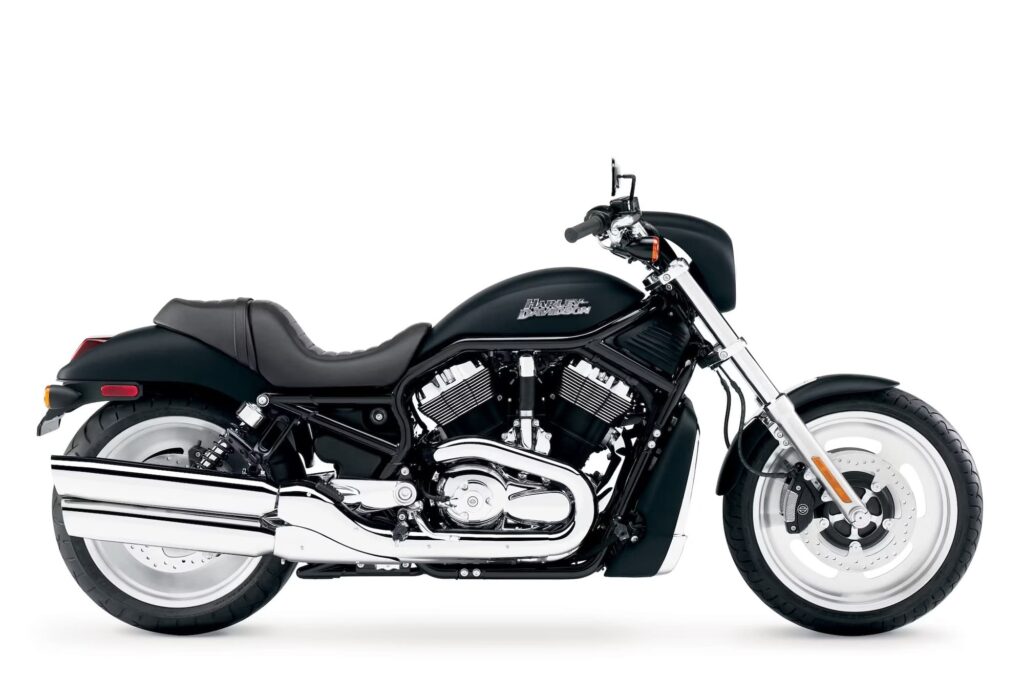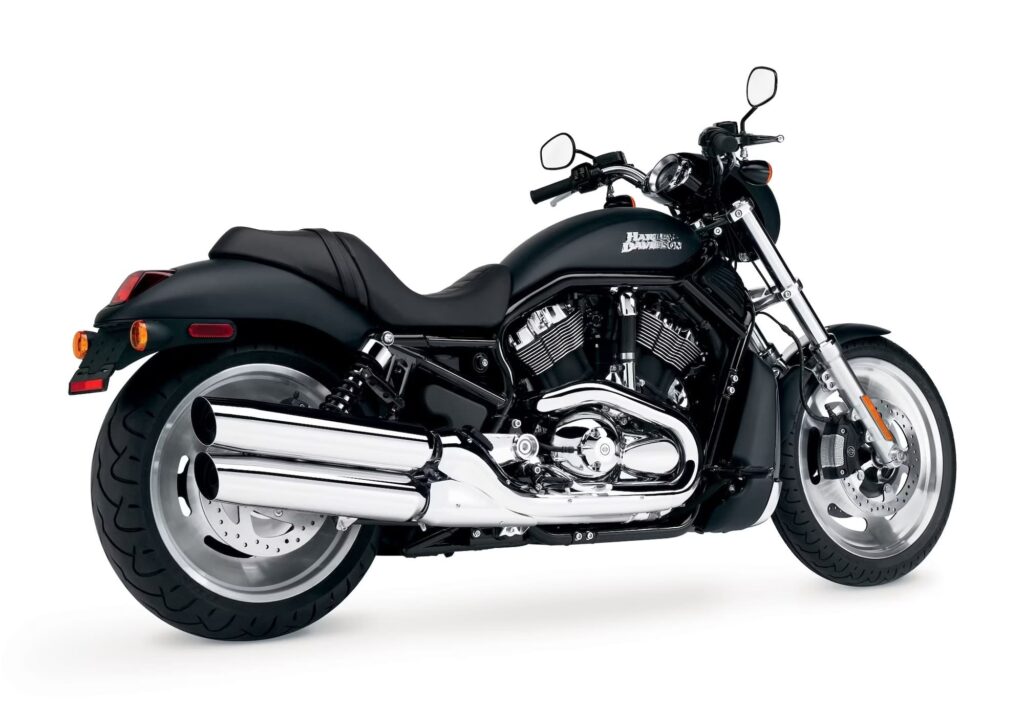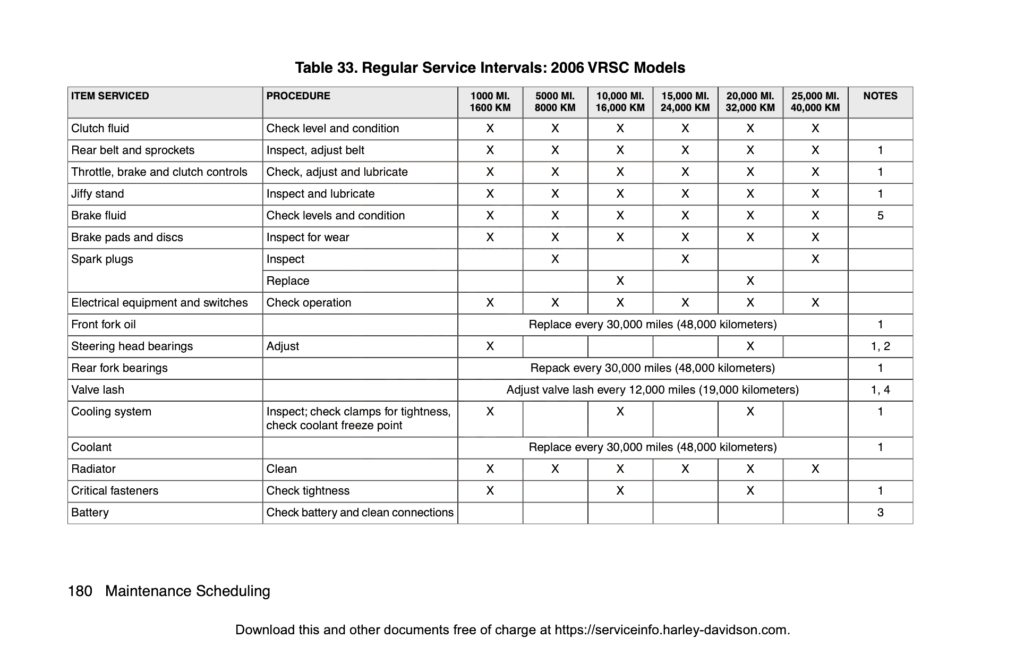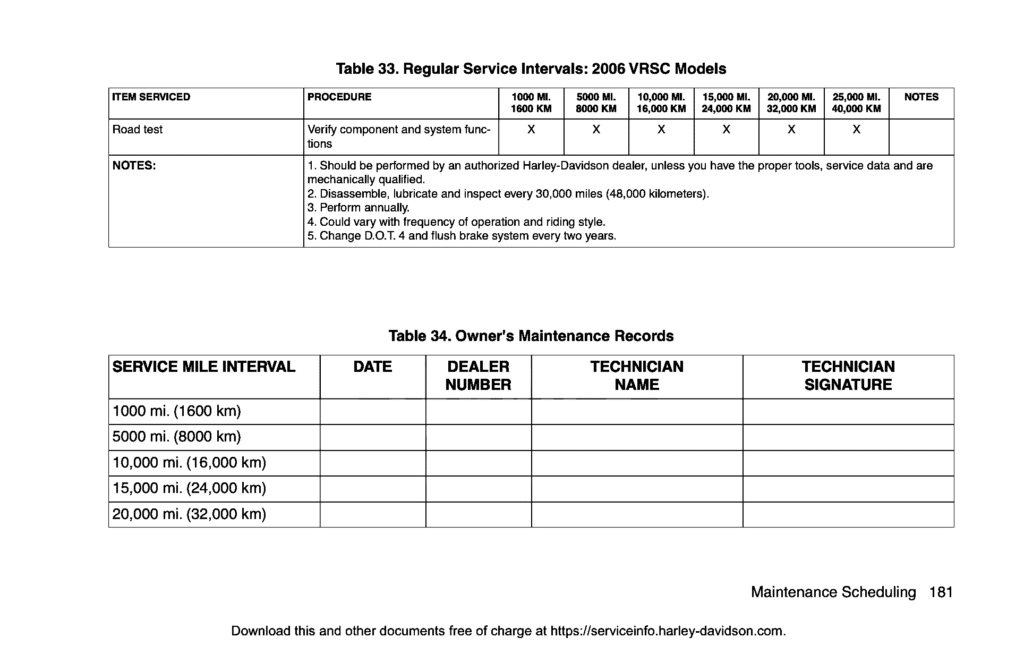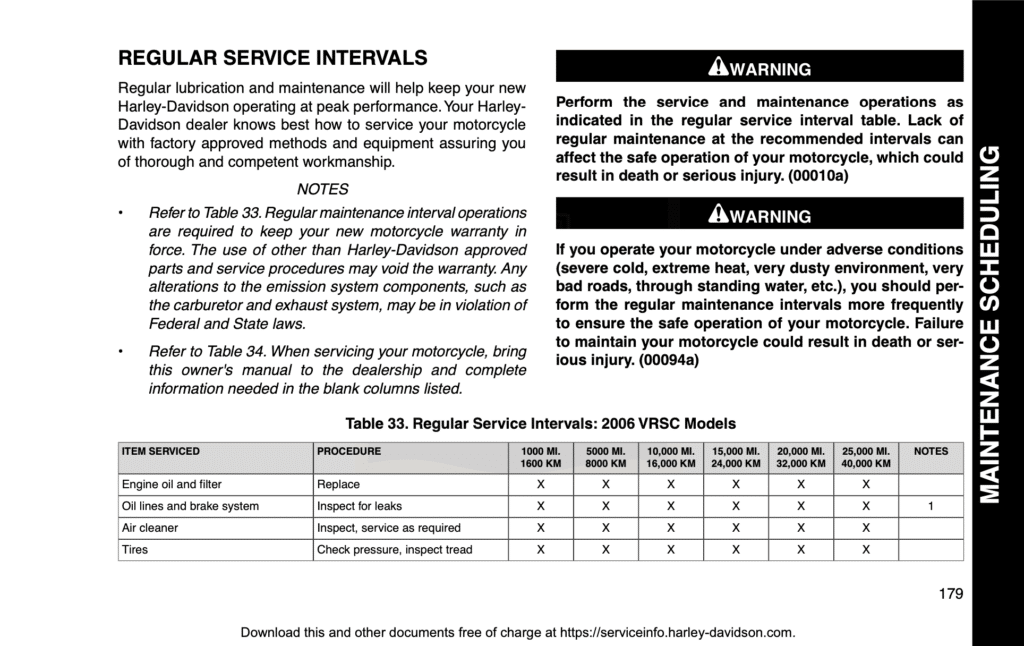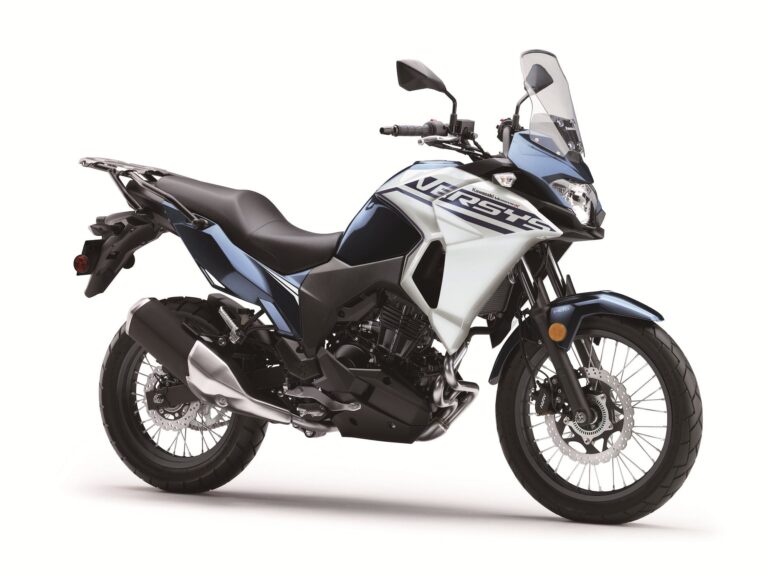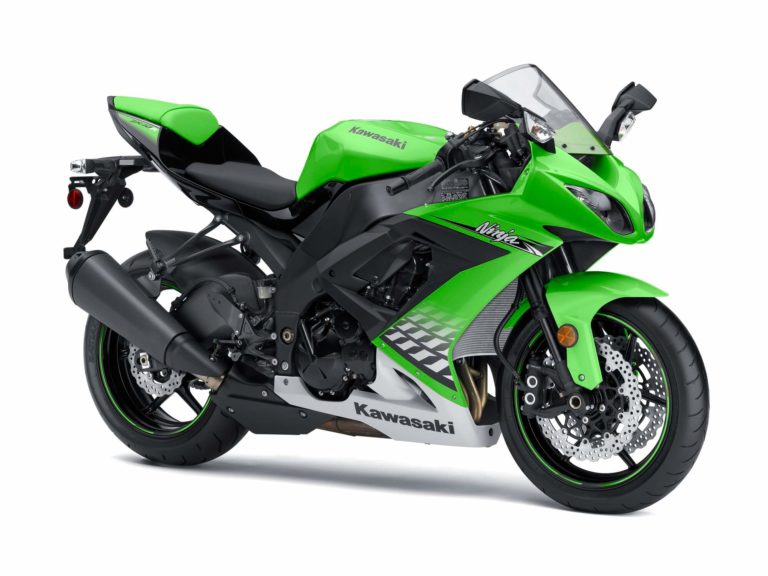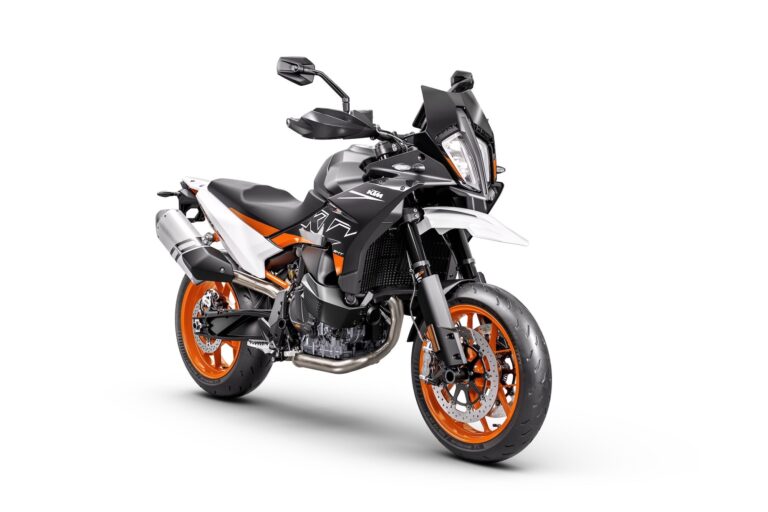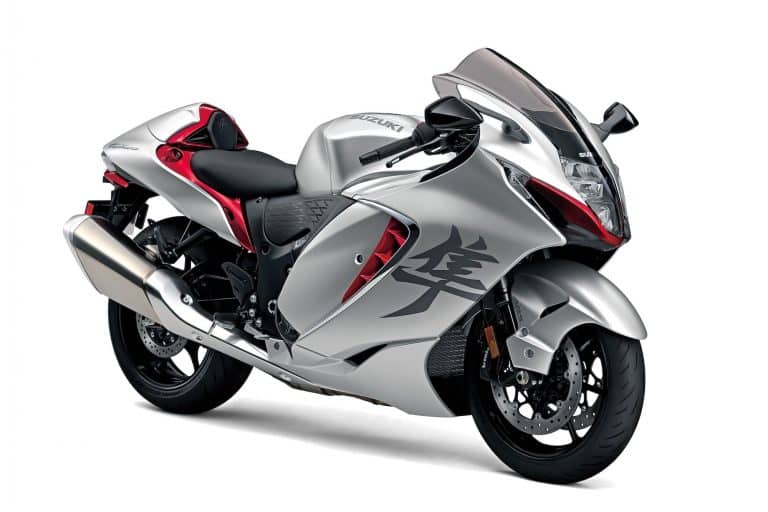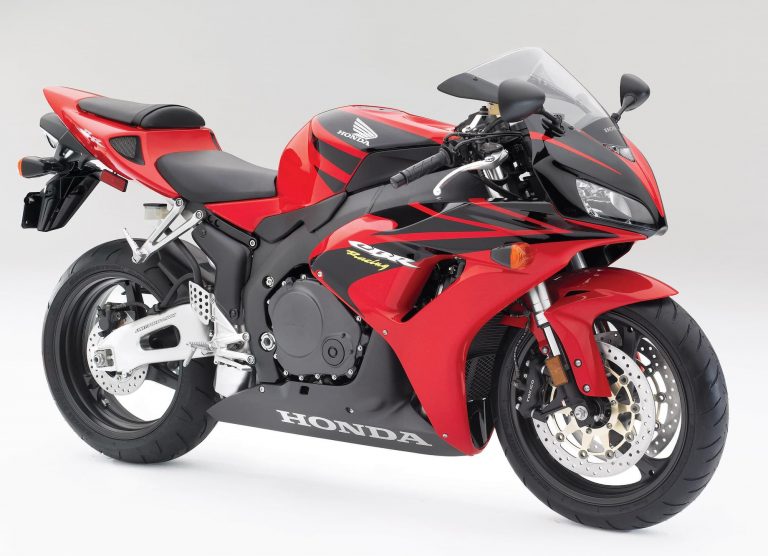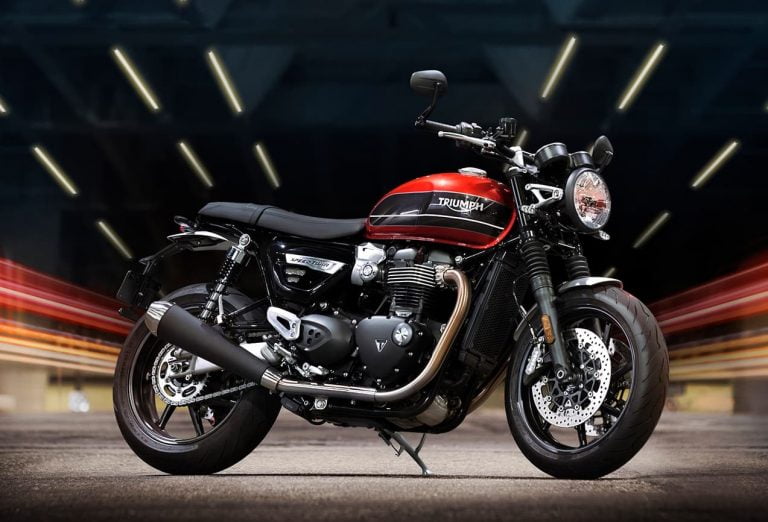Harley-Davidson VRSCD Night Rod (2006-2008) Maintenance Schedule
This is the maintenance schedule for the VRSCD Night Rod, a motorcycle built between 2006 and 2007. It’s based on the 1130 cc first-generation Revolution engine and the standard V-Rod chassis from the original VRSCA / B V-Rod, and has rear sets as standard, but aside from that performance-oriented position, it has a conventional fork and limited ground clearance.
Harley-Davidson launched VRSCD Night Rod in 2006, and kept it in production for only two years (ending after 2007). It’s somewhat between the VRSCA V-Rod and VRSCR Street Rod. The Night Rod has mid controls (closer to rear sets), a blacked-out frame and mostly blacked-out engine, and a 180-profile rear tire. The forks are still conventional, but there’s a slightly steeper rake.
Harley-Davidson updated the VRSCD considerably in 2008 to the VRSCD with the bigger 1250 motor and black rims, and adjusted some items in the maintenance schedule at the same time.
This site has links from which we earn a commission (which unfortunately nobody can save, not even us). If you appreciate this research work, then please use those links. Thanks.
Harley-Davidson VRSCD Service Intervals
In general, like other VRSC motorcycles, the Harley-Davidson VRSCD Night Rod has 5,000 mile / 8,000 km or annual service intervals.
At every service, change your bike’s oil and filter, and look over the motorcycle for things needing lubrication, adjustment, or cleaning. Also, check wearable items (like hoses and tires, which deteriorate) to see if they’re still in good condition, and to ensure they’re not crimped or at risk of being damaged.
Unlike Harley “Big Twins”, the Revolution motor in the VRSCD (which has an 1130 motor) does not have self-adjusting hydraulic valves, and thus the bike has a mandated valve inspection interval. The original manual specified it as 10,000 miles, but a service bulletin extended the valve service interval for the 1130 V-Rod motor to 15000 miles, and that’s what’s reflected below.
While the Night Rod’s final drive belt doesn’t require the maintenance that a chain would, you still do need to check it for condition and tension. See below for guidance on the issue.
A number of items need to be done less frequently, like changing the brake fluid. See the schedule for more details.
Harley-Davidson VRSCD Night Rod Maintenance Schedule
Below is the maintenance schedule for the VRSCD Night Rod. The schedule is split into two components:
- The core maintenance schedule of important items to service, and
- The inspection checklist to do at every scheduled service.
Core Items Maintenance Schedule
Keep repeating this maintenance schedule in the pattern shown. Follow the earlier of time-based or distance-based service intervals, where appropriate.
| mi x 1000 | 5 | 10 | 15 | 20 | 25 | 30 | |
|---|---|---|---|---|---|---|---|
| km x 1000 | 8 | 16 | 24 | 32 | 40 | 48 | Every |
| Service checklist – Perform | ✓ | ✓ | ✓ | ✓ | ✓ | ✓ | Year |
| Engine oil and filter – Replace | ✓ | ✓ | ✓ | ✓ | ✓ | ✓ | |
| Spark plugs – Inspect | ✓ | ✓ | ✓ | ||||
| Spark plugs – Replace | ✓ | ✓ | ✓ | ||||
| Brake fluid – Replace | 2 years | ||||||
| Front fork oil – Replace | ✓ | ||||||
| Steering head bearings – Adjust | ✓ | ||||||
| Steering head bearings – Adjust – Disassemble, lubricate, and inspect | ✓ | ||||||
| Rear fork bearings – Repack | ✓ | ||||||
| Valve lash – Inspect, Adjust (See note below) | ✓ | ✓ | |||||
| Cooling system – Inspect; check clamps for tightness, check coolant freeze point | ✓ | ✓ | ✓ | ||||
| Coolant – Replace | ✓ | ||||||
| Critical fasteners – Check tightness | ✓ | ✓ | ✓ | Year | |||
| Battery – Check battery and clean connections | Year |
Note: The maintenance schedule specifies 12,000 mile or 20,000 km valve service intervals. But a later service bulletin upgraded this to 15,000 mile or 24,000 km, in line with other VRSC models. See image below.
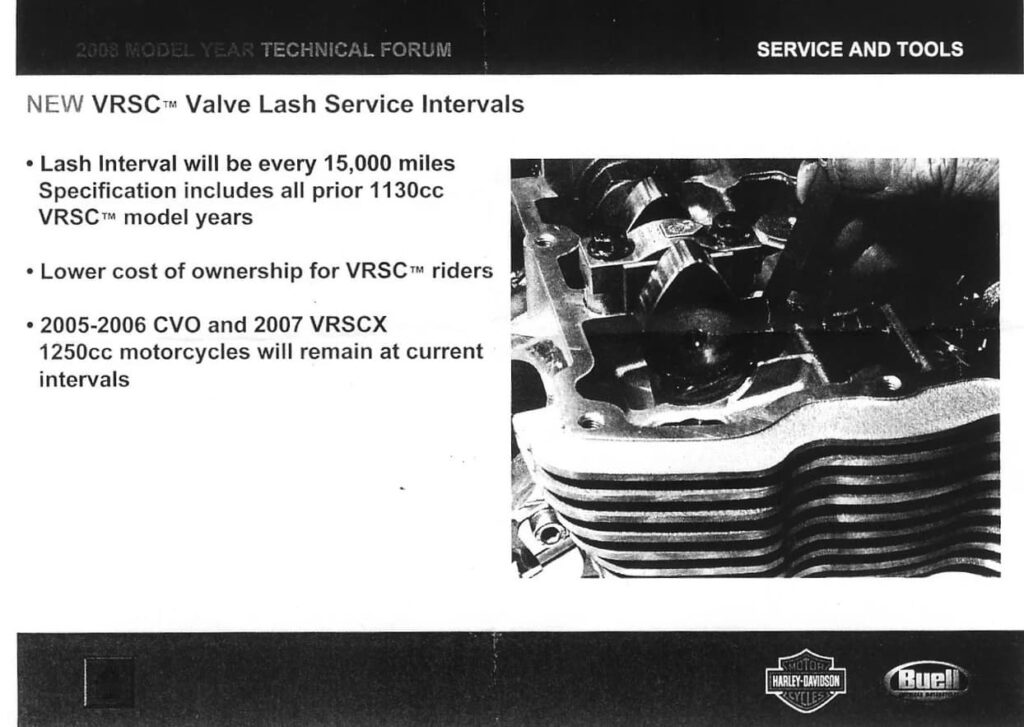
VRSCD Night Rod Service Checklist
Below is the checklist of service items for the Harley-Davidson VRSCD Night Rod.
| Service Checklist — Harley-Davidson V-Rod 1130 |
|---|
| Drive belt and sprockets – Inspect and adjust belt |
| Air cleaner – Inspect, service as required |
| Oil lines and brake system – Inspect for leaks |
| Brake pads and discs – Inspect for wear |
| Brake fluid – Check levels and condition |
| Clutch fluid – Check level and condition |
| Throttle, brake and clutch controls – Check, adjust and lubricate |
| Tires – Check pressure, inspect tread |
| Radiator – Clean |
| Jiffy stand – Inspect and lubricate |
| Electrical equipment and switches – Check operation |
| Road test – Verify component and system functions |
VRSCD Night Rod Belt Tension Adjustment
Like most (but not all) Harley-Davidsons, the Night Rod has a belt final drive. Generally, belt final drives are low maintenance, but you still have to periodically check its condition and tension, adjusting tension and changing it if necessary.
Check the condition of the belt at every service. Look for cracked ribs, broken teeth in the drive wheels, wear in the belt, and so on. Some damage you can live with and ride with caution (e.g. to a dealer) but that’s up to you.
Follow this procedure to check the Night Rod’s belt tension.
- Put the motorcycle in neutral with the motorcycle upright (not on its side stand)
- Use a belt tension gauge to push up at the belt deflection measurement window.
- Measure the number of notches of deflection. Each deflection is 2mm.
Target deflection for the VRSCD: 6 mm or 3 gradations (other models have different deflection numbers).
If the belt slack is out of spec, you need to adjust it by following the below procedure.
- Remove the clip on the axle and loosen the rear axle. You’ll need a large breaker bar.
- Turn the axle adjustment eccentric on the left-hand side until the belt deflects 6 mm.
- Tighten axle to 140-150 lb-ft (190-203 Nm) (Note — This may seem very high, but it’s true — see this discussion on 1130cc.com)
- Install clip.
Once you’ve tightened the axle, check the belt tension again again to make sure it has stayed, and install the clip.
Notes on Valve Service for the VRSC Revolution Engines
The VRSCD has a first-generation 1131 cc “Revolution” series engine, which is a different design from other Harley-Davidson engines — different from the “Big Twins” and different from the Revolution X motors in the later Street line (e.g. the Street Rod XG750A).
The Revolution engine has mechanical valve lifters, not the self-adjusting hydraulic lifters that most Harley-Davidsons have (from Sportsters to Tourers). Thus, the valve clearances have to be checked and possibly set (if needed) — every 15,000 miles or 24,000 km. They don’t necessarily always have to be adjusted, but if they do, the Revolution engine has a shim under bucket valve adjustment procedure, which means a little disassembly.
The procedure to adjust the valve lash is roughly as complex as it is on most motorcycles with dual overhead camshafts.
You have to remove things around the valve covers and remove the valve covers. Some of the fasteners require special tools. It greatly improves access to the rear cylinder to loosen the drive belt, remove or loosen the exhaust, remove some of the engine mounts, and tilt the engine forward.
Then, you have to use feeler gauges (ideally metric) to check the valve clearances. There are four valves per cylinder, so eight clearances to check.
Valve lash specs for the Revolution engine are below:
| Area | Valve lash (mm) | Valve lash (in) |
|---|---|---|
| Intake | 0.195-0.245 mm | 0.0078 – 0.0096 in |
| Exhaust | 0.295-0.345 mm | 0.0117 – 0.0135 in |
If the valve lash is out of spec, you have to then (being careful to not lose the timing) remove the cam chain tensioner, roll a camshaft out of the way (keeping it in lock with the chain), and remove the bucket, replacing the shim underneath it.
The valve lash adjustment procedure is delicate and easy to muck up if you accidentally knock off the timing chain or camshaft, so it’s good to have a mechanic you can call on standby.
Wheels and Tire Pressures for the VRSCD Night Rod
The VRSCD Night Rod shipped with Dunlop D207 radial tires. Note that the Night Rod has a 180-profile rear tire, different from the Night Rod Special.
| Wheel | Tire size | Tire pressure (cold) |
|---|---|---|
| Front | 120/70ZR19 60W | 36 psi / 248 kPa |
| Rear | 180/55ZR18 74W | Solo: 38 psi / 262 kPa 2-up: 40 psi / 276 kPa |
Looking into forums (e.g. here on 1130cc.com), people generally aren’t afraid to stick to the manufacturer’s recommendations for tires for the Night Rod.
About the Harley-Davidson VRSCD Night Rod
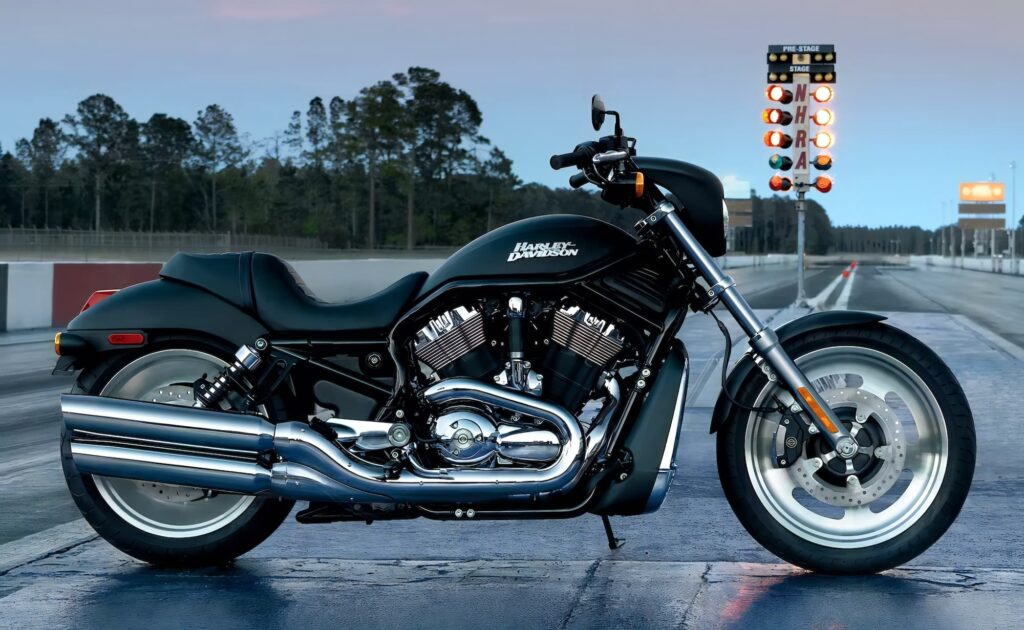
The Harley-Davidson Night Rod is an interesting bike. It’s quite different from the other Harley-Davidsons — sitting somewhere between the Street Rod and the Night Rod Special.
The Night Rod is based around the same 1130 cc Revolution V-Twin as its stablemates, starting with the VRSCA V-Rod. But the VRSCD started incorporating elements that would be later seen in the Night Rod, including a blacked-out engine and frame.
But the VRSCD has mid controls — which, combined with the low seat (26 inches or 660 mm) of the V-Rod, makes for a cramped riding position, more akin to rear sets on sport bikes. The VRSCD has quite low suspension (the same as the VRSCA, and shorter than the VRSCR — the other V-Rod with mid controls). So the riding position is pretty compact.
The VRSCD was actually the last V-Rod to have mid controls. Harley-Davidson abandoned the format for the Night Rod Special from 2007.
The 1131 cc (often written “1130”) engine in the Night Rod makes 120 hp at 8250 rpm — it’s a high-torque but also high-revving motor, making for a riding experience like modern liquid-cooled power cruisers, like the Indian Scout Bobber.
The mid controls and low-rise bars make for a comfortable, neutral riding position — as long as your knees can take the bend.
And the brakes on the VRSCD Night Rod are Brembo four-piston sliding calipers on twin discs. They’re quite ample for bringing the bike to a halt for the kind of riding you’re likely to do on a V-Rod.
Maintenance for the VRSCD is low. You do have to change the oil, but at least you don’t have to do it in multiple places as you do in the air-cooled “big twin” cruisers from Harley.
The major fly in the ointment in terms of maintenance is that you have to a) regularly check the valves — though not that regularly at every 15,000 miles / 24,000 km. And as the V-Rod is more of a joyrider’s bike rather than a cross-country tourer, this doesn’t come up that often.
Harley-Davidson also specifies a distance interval for changing the coolant, which is different from most motorcycles (that say you should do it every 2-4 years).
Aside from that, maintain the belt, and you should be on your way for a while.
Reference — Manual Screenshots
The above info came from a mixture of the owner’s manual for the 2006 model VRSC, the service manual, press releases, and online forums.
See below for screenshots of the manual to confirm the maintenance schedule.
You can download maintenance schedules from Harley-Davidson here (you need an account and to log in).
